Detailed analysis of the Kodak EasyShare DX7590 images, from Imatest(tm)
I've recently begun using Norman Koren's excellent "Imatest" analysis program for quantitative, thoroughly objective analysis of digicam test images. I highly commend it to our technically-oriented readers, as it's far and away the best, most comprehensive analysis program I've found to date. (And with an introductory price of only $59, it's hard to beat.)
My comments below are just brief observations of what I see in the Imatest results. A full discussion of all the data Imatest produces is really beyond the scope of this review: Visit the Imatest web site for a full discussion of what the program measures, how it performs its computations, and how to interpret its output.
Here's some of the results produced by Imatest for the Kodak DX7590:
Color Accuracy
For the most part, the Kodak DX7590 has pretty good hue accuracy, but like
many consumer-level digicams, tends to oversaturate its colors somewhat. The
oversaturation is shown by the extent to which the circles (camera color)
are displaced outward (higher saturation) relative to the ideal values (squares).
On average, color saturation of swatches on the MacBeth ColorChecker(tm) chart
are 116.3% of their ideal values. (An average oversaturation of 16.3%.) What
isn't shown in this plot is that the DX7590 also tends to produce very slight
reddish casts in its images. Many users will probably be unaware of this tendency,
as the casts are so slight, but I feel compelled to mention it for the sake
of accuracy and completeness..
Color Analysis
These images show the color behavior of the DX7590 directly. In each color swatch, the outer perimeter shows the color as actually captured by the camera, the inner square shows the color after correcting for the luminance of the photographed chart (as determined by a 2nd-order curve fit to the values of the gray swatches), and the small rectangle inside the inner square shows what the color should actually be, based on perfect rendering to the sRGB color space.
Here, it seems that at least some of the oversaturation arises from the camera's
rather contrasty tone curve. It does show the effect of the hue shift in the
cyans and blues though, with the camera reproducing those colors as a little
"richer" or "cleaner" looking than in real life.
Gray Patch Tone and Noise Analysis
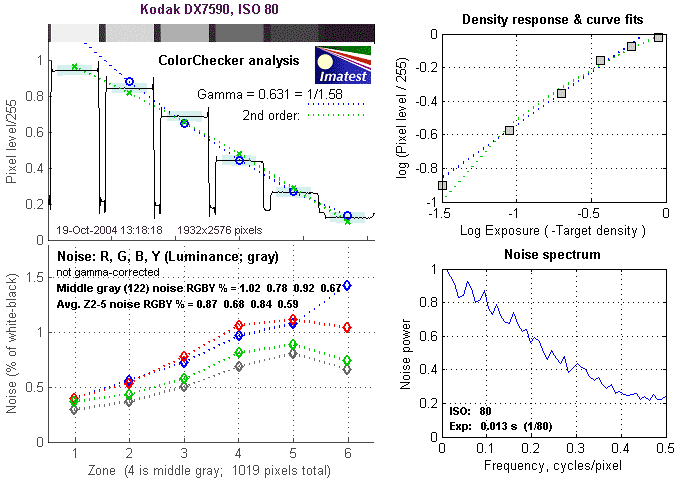
There's a lot in this particular graph, a lot more than I have room to go into
here. Bottom line, the DX7590's noise levels are a lower than average across
the board, but the camera achieves this with very heavy-handed noise-suppression
processing that loses fine detail.
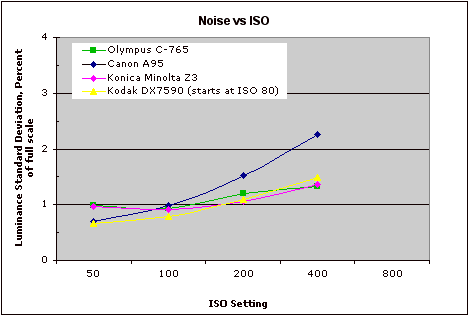
This chart compares the DX7590's noise performance over a range of ISOs against
that of other cameras. As you can see, the DX7590 shows the same or lower image
noise than most competing models, but as noted earlier, it trades away a lot
of subtle subject detail to achieve this, particularly at high ISO settings.
The chart above shows consolidated results from spatial frequency response
measurements in both the horizontal and vertical axes. The "MTF 50"
numbers tend to correlate best with visual perceptions of sharpness, so those
are what I focus on here. The numbers here are distorted (made a little higher)
by the DX7590's high contrast, which results in both white and black values
clipping. The uncorrected resolution figures are 1324 line widths per picture
height in the horizontal direction (corresponding to the vertically-oriented
edge), and 1263 along the vertical axis (corresponding to the horizontally-oriented
edge), for a combined average of 1294 LW/PH. Correcting to a "standardized"
sharpening with a one-pixel radius decreases this number a fair bit, to an average
of 1024 LW/PH. The corrected numbers are on the low side for a 5-megapixel camera.
For the real techno-geeks, the two plots below show the actual edge response
of the DX7590, for horizontal and vertical edges:
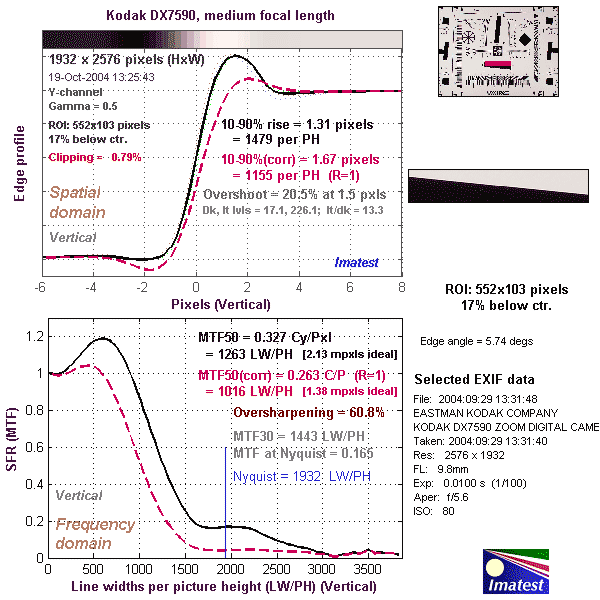
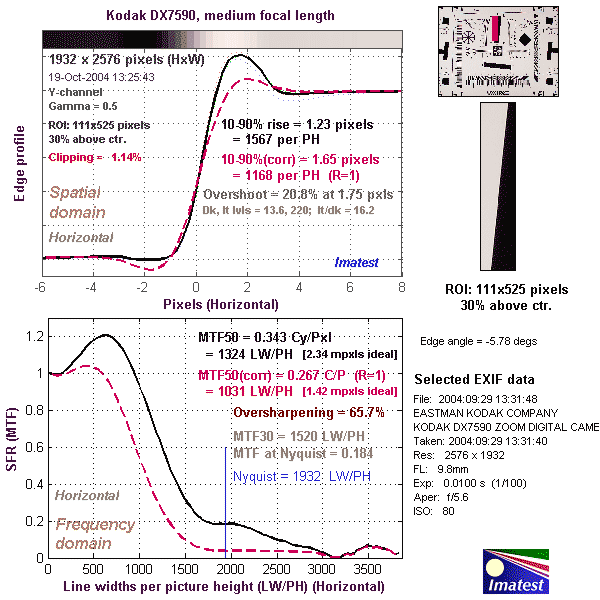
DX7590 Test Images
DX7590 Specifications
DX7590 "Picky Details"
Up to Imaging Resource digital cameras area
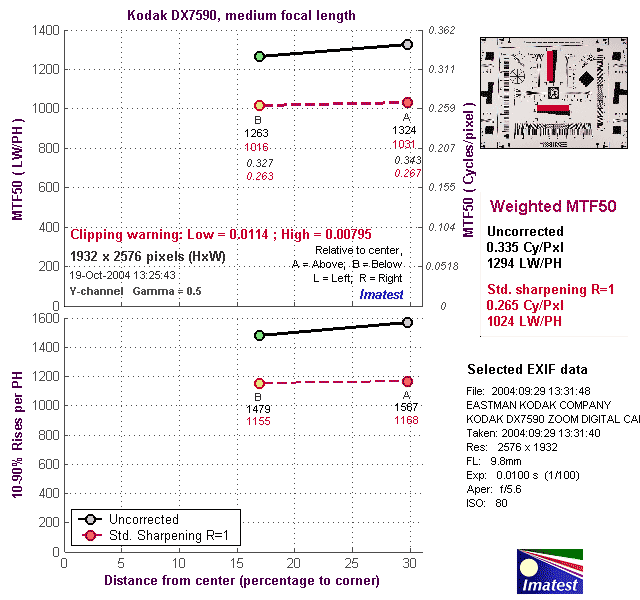

Follow Imaging Resource: